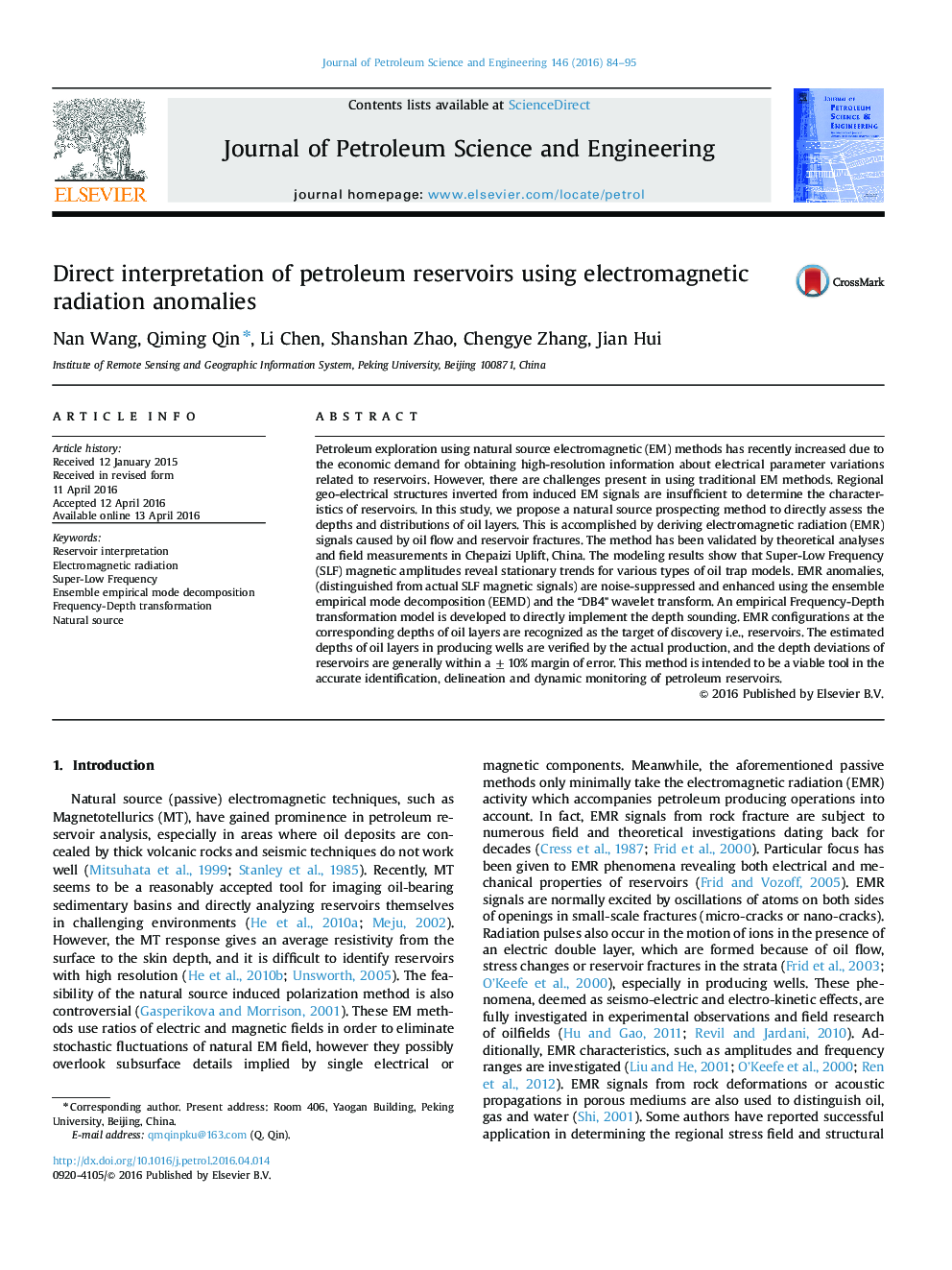| کد مقاله | کد نشریه | سال انتشار | مقاله انگلیسی | نسخه تمام متن |
|---|---|---|---|---|
| 1754489 | 1522795 | 2016 | 12 صفحه PDF | دانلود رایگان |
• New method to directly interpret petroleum reservoirs.
• Empirical Frequency-Depth transformation was illustrated.
• Theoretical analysis of Super-Low Frequency responses of reservoir models.
• New method to extract EMR anomalies from SLF curves.
• New de-noising method using EEMD and wavelet transform.
Petroleum exploration using natural source electromagnetic (EM) methods has recently increased due to the economic demand for obtaining high-resolution information about electrical parameter variations related to reservoirs. However, there are challenges present in using traditional EM methods. Regional geo-electrical structures inverted from induced EM signals are insufficient to determine the characteristics of reservoirs. In this study, we propose a natural source prospecting method to directly assess the depths and distributions of oil layers. This is accomplished by deriving electromagnetic radiation (EMR) signals caused by oil flow and reservoir fractures. The method has been validated by theoretical analyses and field measurements in Chepaizi Uplift, China. The modeling results show that Super-Low Frequency (SLF) magnetic amplitudes reveal stationary trends for various types of oil trap models. EMR anomalies, (distinguished from actual SLF magnetic signals) are noise-suppressed and enhanced using the ensemble empirical mode decomposition (EEMD) and the “DB4” wavelet transform. An empirical Frequency-Depth transformation model is developed to directly implement the depth sounding. EMR configurations at the corresponding depths of oil layers are recognized as the target of discovery i.e., reservoirs. The estimated depths of oil layers in producing wells are verified by the actual production, and the depth deviations of reservoirs are generally within a ±10% margin of error. This method is intended to be a viable tool in the accurate identification, delineation and dynamic monitoring of petroleum reservoirs.
Figure optionsDownload as PowerPoint slide
Journal: Journal of Petroleum Science and Engineering - Volume 146, October 2016, Pages 84–95
